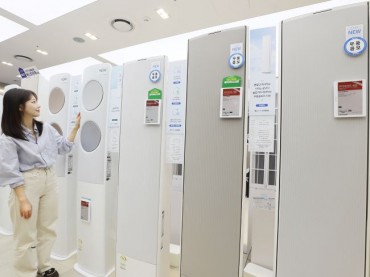
A recent community health survey conducted by the Korea Disease Control and Prevention Agency (KDCA) has revealed notable regional differences in health-related behaviors among South Koreans. (Image courtesy of Yonhap)
SEOUL, Dec. 20 (Korea Bizwire) – A recent community health survey conducted by the Korea Disease Control and Prevention Agency (KDCA) has revealed notable regional differences in health-related behaviors among South Koreans. The findings of the 2023 survey, released on September 19, show significant variations in physical activities, smoking, heavy drinking, and obesity rates across the country.
In Seoul, 64.3% of respondents reported walking for at least 30 minutes on five or more days in the past week, a figure significantly higher than the national average of 47.9%. Conversely, Gangwon Province recorded the lowest rate at 40.6%. The survey also highlighted that moderate to vigorous physical activities for at least 20 minutes on three days, or 30 minutes on five days a week, were most common in North Chungcheong and North Gyeongsang Provinces, both at 27.4%, while the lowest was in Gwangju at 21.2%, compared to the national average of 25.1%.
Sejong, known for being South Korea’s administrative capital, emerged as the region with the lowest rates of smoking and high-risk drinking. The current smoking rate in Sejong was reported at 13.2%, and the high-risk drinking rate – defined as men consuming seven or more drinks (or five cans of beer), and women five or more drinks (or three cans of beer) at least twice a week – was 9.3%. In contrast, Gangwon Province had the highest rates for both smoking (22.3%) and high-risk drinking (16.9%).
Amid increasing concerns over obesity, the survey revealed that Daejeon had the lowest obesity rate at 28.4%, with obesity defined as having a body mass index (BMI) of 25 or higher. Jeju Island exceeded the national average of 33.7% with an obesity rate of 36.1%.
Additional health indicators, such as post-lunch toothbrushing and self-perceived health status, varied significantly by region. Daejeon led in both categories with 74.9% and 59.6%, respectively, while Jeju (65.7%) and Ulsan (45.1%) lagged behind in these aspects.
The survey also examined safety practices, revealing Seoul to have the highest rate of rear-seat seatbelt use in cars at 34.1%, while Jeju recorded the lowest at 15.5%.
The KDCA emphasized the importance of developing region-specific strategies to address these diverse health indicators. KDCA Commissioner Jee Youngmee urged local governments to accurately identify unique health issues in their regions, continuously monitor both improvements and deteriorations in health indicators, and devise optimal public health projects based on these findings.
Ashley Song (ashley@koreabizwire.com)






